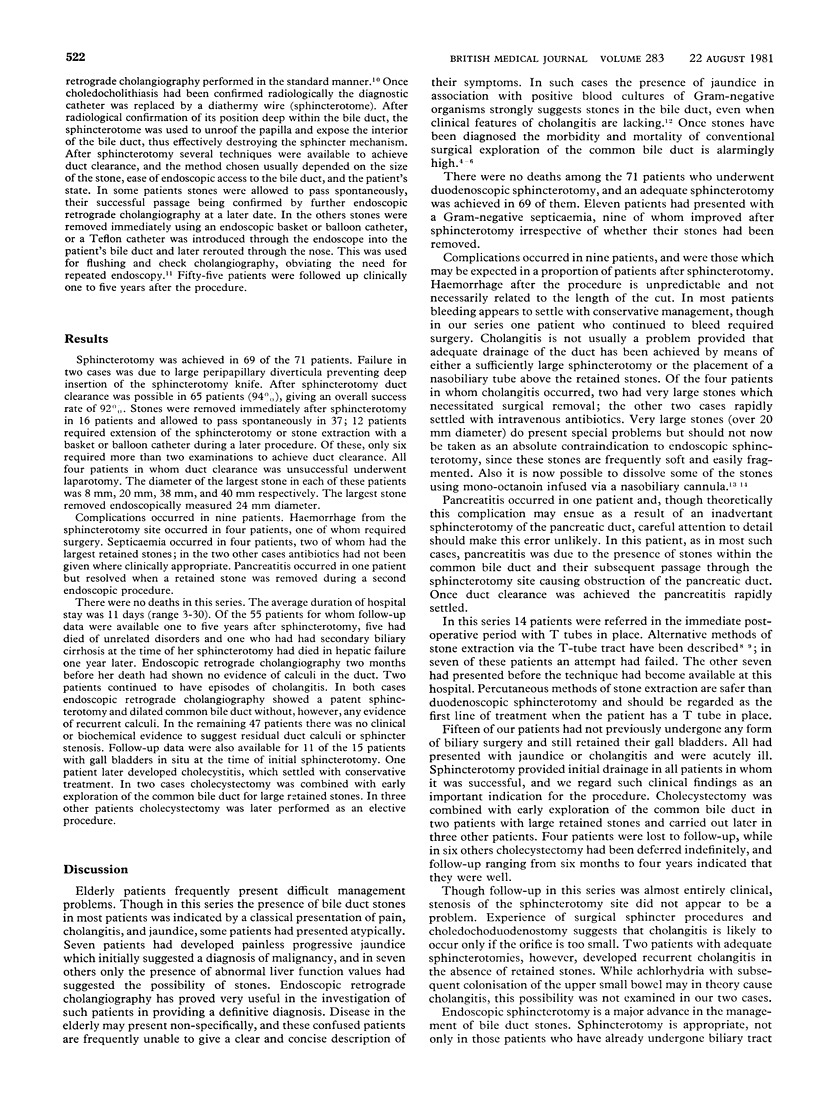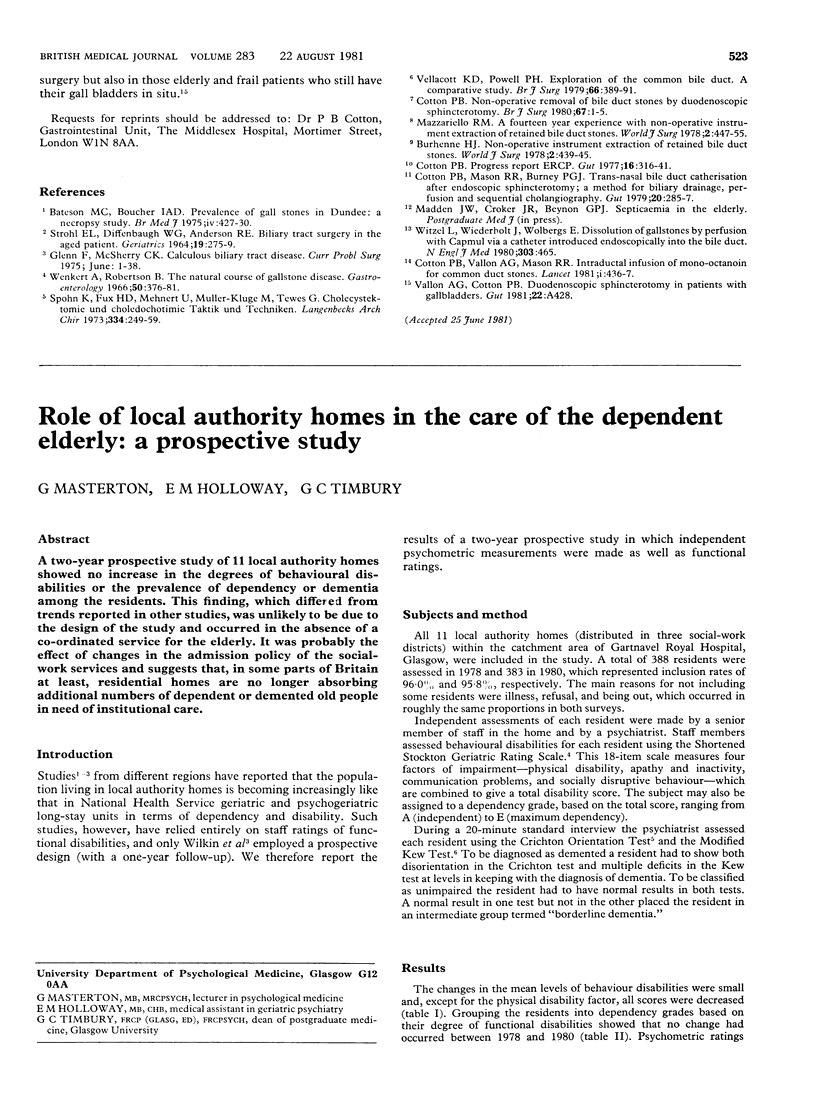Abstract
Between January 1975 and December 1979, 71 patients over the age of 70 underwent attempted duodenoscopic sphincterotomy for stones in the common bile duct. Fifteen patients still had gall bladders in situ. Sphincterotomy was possible in 69 of the patients and in 65 of these duct clearance was achieved, giving an overall success rate of 92%. Failure to achieve sphincterotomy in two cases was due to substantial peripapillary diverticula. Duct clearance failed in four patients, mostly due to the size of the retained stones. The largest stone extracted was 24 mm diameter. There were no deaths but complications occurred in nine patients (13%); these were haemorrhage in four (requiring surgery in one), cholangitis in four (two of whom required surgical extraction of stones), and pancreatitis in one. The average duration of hospital stay in successful cases was 11 days (range three to 30). Clinical follow-up of 55 patients one to five years after sphincterotomy showed no evidence of stones or of stenosis of the sphincter. Duodenoscopic sphincterotomy is a major advance in the management of elderly patients with stones in the common bile duct.
Full text
PDF


Selected References
These references are in PubMed. This may not be the complete list of references from this article.
- Burhenne H. J. Nonoperative instrument extraction of retained bile duct stones. World J Surg. 1978 Jul;2(4):439–445. doi: 10.1007/BF01563670. [DOI] [PubMed] [Google Scholar]
- Cotton P. B., Burney P. G., Mason R. R. Transnasal bile duct catheterisation after endoscopic sphincterotomy: method for biliary drainage, perfusion, and sequential cholangiography. Gut. 1979 Apr;20(4):285–287. doi: 10.1136/gut.20.4.285. [DOI] [PMC free article] [PubMed] [Google Scholar]
- Cotton P. B. ERCP. Gut. 1977 Apr;18(4):316–341. doi: 10.1136/gut.18.4.316. [DOI] [PMC free article] [PubMed] [Google Scholar]
- Cotton P. B., Vallon A. G., Mason R. Intra-ductal infusion of mono-octanoin for common duct stones. Lancet. 1981 Feb 21;1(8217):436–437. doi: 10.1016/s0140-6736(81)91809-2. [DOI] [PubMed] [Google Scholar]
- Glenn F., McSherry C. K. Calculous biliary tract disease. Curr Probl Surg. 1975 Jun;:1–38. doi: 10.1016/s0011-3840(75)80012-8. [DOI] [PubMed] [Google Scholar]
- Mazzariello R. M. A fourteen-year experience with nonoperative instrument extraction of retained bile duct stones. World J Surg. 1978 Jul;2(4):447–455. doi: 10.1007/BF01563671. [DOI] [PubMed] [Google Scholar]
- STROHL E. L., DIFFENBAUGH W. G., ANDERSON R. E. BILIARY TRACT SURGERY IN THE AGED PATIENT. Geriatrics. 1964 Apr;19:275–279. [PubMed] [Google Scholar]
- Spohn K., Fux H. D., Mehnert U., Müller-Kluge M., Tewes G. Cholecystektomie und Choledochotomie--Taktik und Techniken. Langenbecks Arch Chir. 1973;334:249–259. doi: 10.1007/BF01286566. [DOI] [PubMed] [Google Scholar]
- Vellacott K. D., Powell P. H. Exploration of the common bile duct: a comparative study. Br J Surg. 1979 Jun;66(6):389–391. doi: 10.1002/bjs.1800660605. [DOI] [PubMed] [Google Scholar]
- Wenckert A., Robertson B. The natural course of gallstone disease: eleven-year review of 781 nonoperated cases. Gastroenterology. 1966 Mar;50(3):376–381. [PubMed] [Google Scholar]
- Witzel L., Wiederholt J., Wolbergs E. Dissolution of gallstones by perfusion with Capmul via a catheter introduced endoscopically into the bile duct. N Engl J Med. 1980 Aug 21;303(8):465–465. [PubMed] [Google Scholar]


